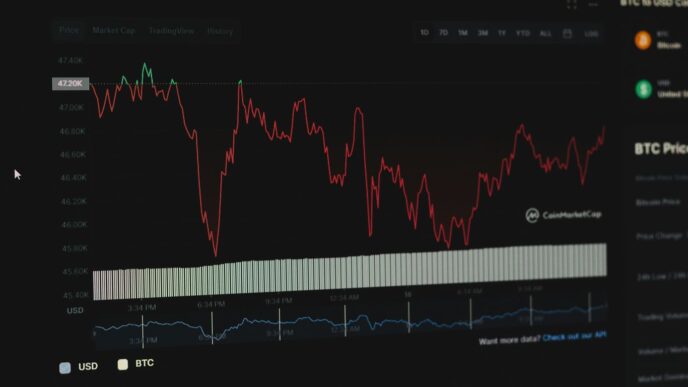As cars advance with new tech and safety features, their small electronic parts must stay strong and reliable. That’s why the AEC-Q100 Qualification matters. It sets up a series of tests that check whether automotive chips can survive heat, cold, vibration, and other harsh conditions.
As electric and self-driving cars become more common, carmakers must understand and apply AEC-Q100 to stay competitive and build high-quality vehicles. This article will explain five key things about AEC-Q100 and how it ensures automotive chips are safe and reliable.
What is AEC-Q100 Qualification?
The Automotive Electronics Council (AEC) created the AEC-Q100 standard to ensure the integrated circuits (ICs) used in cars are tough and reliable. This standard includes a series of strict tests to check if these chips can handle the harsh conditions inside vehicles, like high and low temperatures, constant vibrations, and moisture.
Major carmakers such as Chrysler, Ford, and General Motors formed the AEC in 1990. Their goal was to set common rules for testing automotive electronics so all components meet the same high standards for quality and reliability.
When manufacturers follow the AEC-Q100 standard, they prove their chips are strong enough to perform well in real driving conditions. This helps boost the safety and performance of the vehicles that use them.
Why AEC-Q100 is Important for Automotive Chip Reliability
Automotive chips power key vehicle systems like Advanced Driver Assistance Systems (ADAS), brakes, infotainment, and engine control. These chips must work reliably to keep vehicles safe and performing well. When a chip fails, it can cause system errors, reduce performance, or even create safety risks.
The AEC-Q100 standard tests chips for extreme conditions inside vehicles, like temperature, vibrations, moisture, and static electricity, ensuring they can withstand these stresses. This helps manufacturers find and fix weaknesses before the chips are installed in vehicles.
By following AEC-Q100, manufacturers build chips that meet the high demands of today’s vehicles. This improves reliability, boosts vehicle performance, and helps keep drivers safe.
Key Requirements of AEC-Q100 Qualification
AEC-Q100 makes sure automotive chips are reliable by testing them in difficult conditions that simulate real-life situations.
- Stress Testing for Automotive Environments: Chips undergo tests for thermal cycling, high-temperature operating life (HTOL), humidity, and vibrations. These tests simulate the harsh conditions that vehicles encounter, ensuring the chips can withstand the demanding environments in which they’ll be used.
- Extended Temperature Range: ICs must perform reliably within a temperature range of -40°C to +150°C, ensuring functionality in extreme weather.
- Electrical and Mechanical Stress Resistance: Chips are tested for electrical overstress (EOS), electrostatic discharge (ESD), and mechanical shock to ensure they can handle electrical and physical stress without failing.
- Failure Analysis: A complete failure analysis uncovers the causes of chip failures, enabling manufacturers to make improvements that enhance the long-term reliability and performance of automotive chips.
- Long-Term Durability
- ICs must maintain consistent performance over the expected lifespan of a vehicle, typically 10+ years.
These requirements help automotive chips withstand challenging conditions and ensure long-term use in vehicles.
Benefits of AEC-Q100 Qualification
The AEC-Q100 qualification brings several important benefits to automotive chips, helping make cars safer, more reliable, and more trusted by consumers:
-
Higher Reliability
Chips tested under AEC-Q100 can handle extreme heat, cold, electrical stress, and rough environments. This means they last longer and help keep car electronics working properly over time.
-
Better Safety
Using chips that meet AEC-Q100 standards helps manufacturers reduce the risk of failures in critical systems such as brakes and crash-avoidance features. This contributes to enhanced safety for both drivers and passengers, ensuring that these vital systems function reliably under various conditions.
-
Lower Warranty and Repair Costs
Testing chips thoroughly before they go into vehicles helps catch problems early. This means fewer recalls and repairs, saving money for manufacturers and boosting customer satisfaction.
-
Stronger Consumer Trust
When people know a vehicle uses reliable, tested components, they feel more confident in its quality. This builds brand loyalty and improves a company’s reputation.
AEC-Q100 helps ensure that automotive chips are tough, safe, and reliable—benefiting carmakers and drivers alike.
Challenges in Achieving AEC-Q100 Qualification
Getting AEC-Q100 qualified is important for making sure automotive chips are reliable, but it’s not easy. Manufacturers face several key challenges:
- High Cost and Long Testing Time: The AEC-Q100 testing process is costly and time-consuming because chips must undergo rigorous tests such as high-temperature operation, temperature cycling, and electrostatic discharge (ESD). These tests can take a long time to finish and need expensive equipment, which can slow down the development of the product.
- Balancing Innovation with Reliability: New technologies like electric vehicles (EVs) and self-driving systems need innovative chips, but these new designs may have unknown risks or potential failure points. Ensuring these components meet AEC-Q100 standards requires additional testing, which can slow down the time it takes for new products to reach the market.
- Adapting to Changing Requirements: As electric vehicles (EVs) and autonomous cars introduce challenges like higher voltages, increased heat, and continuous data processing, traditional AEC-Q100 tests may not be enough. Manufacturers must stay updated with changes to the standards and sometimes add extra tests to ensure components perform properly in these advanced vehicles.
- Material Limitations: New materials, like Silicon Carbide or Gallium Nitride, used in electric vehicles, require unique testing methods to ensure their reliability, which can complicate the qualification process.
AEC-Q100 is essential for reliability, it’s also demanding. Companies must invest time, money, and effort to meet these standards while keeping up with fast-moving technology in the automotive world.
Future of AEC-Q100 in the Automotive Industry
The AEC-Q100 standard is always changing to keep up with the fast-paced world of automotive technology, especially with the growth of electric vehicles (EVs) and self-driving cars.
Smarter Chips for Smarter Cars
Today’s cars have complex systems like:
- ADAS (Advanced Driver Assistance Systems)
- Infotainment systems
- Autonomous driving features
These systems require powerful chips that can process data in real time. AEC-Q100 is being updated to ensure these chips stay reliable, even under tough conditions.
Key Updates to AEC-Q100
The latest update, Revision J, includes several important changes:
- Advanced Packaging Tests: Testing for complex chip packaging, like Flip-Chip Ball Grid Arrays (FC-BGA), to ensure durability.
- Stronger ESD Testing: New tests for 28nm and RF (Radio Frequency) chips to handle electrostatic discharge more effectively.
- Mission-Based Testing: Using real-life scenarios to test chips based on how they will be used.
Smarter Testing for New Technologies
As cars become more electrified and autonomous, testing methods are evolving as well:
- High Voltage Tests: Tests like HV H3TRB simulate how chips perform in hot, humid, and high-voltage environments, which are crucial for EVs.
- Better Thermal Testing: Ensures chips can handle the heat generated by high-power use in EVs.
- New Materials = New Tests: New materials like Silicon Carbide and Gallium Nitride used in EVs need new testing methods to check their reliability.
As automotive technology becomes more advanced, the AEC-Q100 standard is evolving to ensure that chips used in these vehicles remain safe, durable, and reliable for the long haul.














